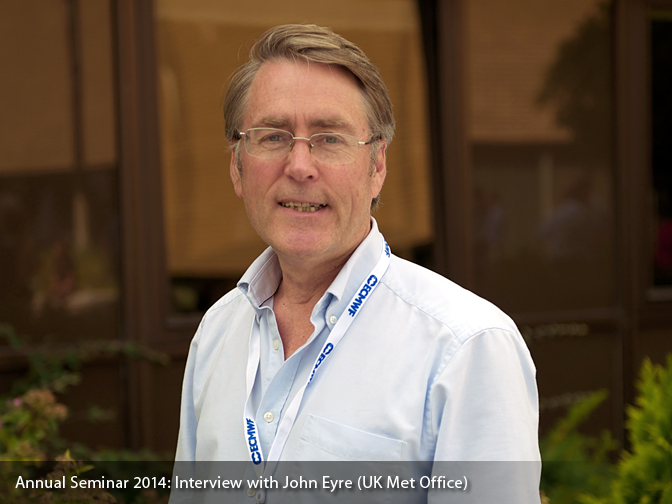

John Eyre is Met Office Fellow in Satellite Applications and has spent most of his career at the UK Met Office and ECMWF. His research interests have been mainly concerned with infra-red and microwave radiative transfer modelling, retrieval of atmospheric temperature and composition from satellite observations, assimilation of remotely-sensed observations in NWP, and the design of future observing systems.
What will you speak about at the seminar?
In recent years I’ve been strongly involved in WMO activities concerning the evolution of global observing systems. This is what I have been asked to speak about at the seminar: to what extent do the plans of space agencies meet WMO’s “Vision for global observing systems in 2025?”
Do space agencies need to collaborate in meeting WMO’s vision?
With satellite data playing an increasingly important role in NWP, it is important that space agencies work together. In that way they can ensure that users’ requirements for observations from space are met, and that they are assured on an operational basis into the future. The space agencies also work closely with NWP centres, such as ECMWF, to get feedback about the quality of satellite data.
Where does the satellite data come from?
For many years, the satellite observations used in NWP were dominated by those provided to the world by the USA. With the launch of the Metop series of satellites by Europe, starting in 2006, the picture became more balanced. Also, reliable data are now starting to become available from Chinese operational weather satellites and so, by 2025, we are expecting balanced contributions from the operational satellites of the USA, Europe and China. In addition, there are also significant contributions to global observing systems from operational and research space agencies of many nations.
What use is made of satellite data?
Satellite agencies provide data that is required for many applications: not only NWP but also nowcasting, ocean forecasting, climate monitoring, space weather and many others. There is an evolving range of meteorological and climate monitoring data and products from space agencies that reflect the needs of the user community.
What is the role of WMO in satellite activities?
One of the key roles of WMO is to monitor the activities and plans of all the space agencies, and to assess how well user requirements for observations are met, and how well they will be met over the next 10–20 years. The outputs from these “gap analyses” are fed back to space agencies as input to the evolution of their plans for observing systems.
